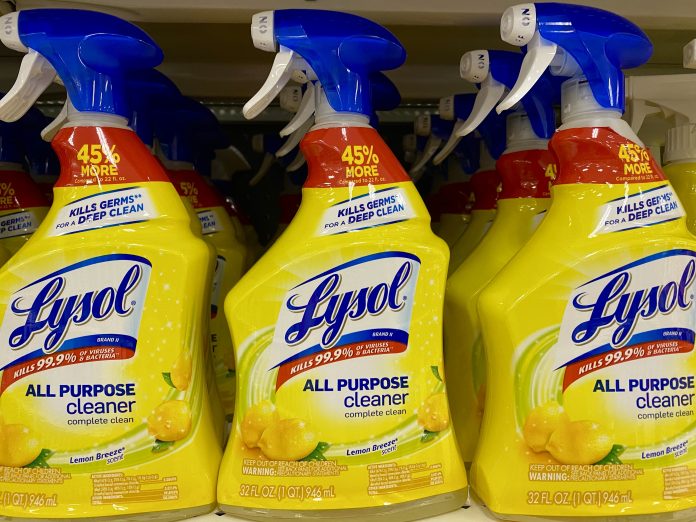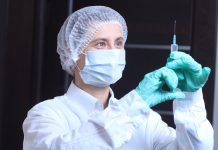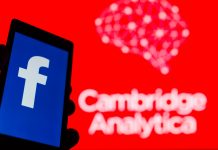Bioweapons, bleach and ‘flu’ comparisons: Researchers link the circulation of COVID misinformation to the consumption of conservative social media
People reading news from typically conservative media or using social media for their information have been found to be more likely to be misinformed and believe in conspiracy theories. Researchers found that the use of mainstream TV and print news made people more accurately informed about COVID-19, whilst the individuals who largely used digital sources such as social media, were significantly likely to believe in ‘fake news’.
With the recent announcement of President Trump that ‘disinfectant’ can be used as a COVID-19 cure via lung injection, the study of misinformation has become crucial to communicate true health messages and prevent unnecessary hospitalisations. Whilst the President has explained the remark as ‘sarcasm’, and his chief medical advisor urged the world to “move on”. It is extremely difficult to retract the impact of misinformation after it has been spoken. This was proven in the run-up to the UK’s Brexit vote, in which imaginary sums of potential funding were constantly discussed. It is still proven in the near-impunity experienced by leaders who make policy mistakes that are carefully curated out of their digital activities, away from the public consciousness of their supporters.
The Maryland Emergency Management Agency warned that “under no circumstance” should disinfectants be ingested.
Gov. Larry Hogan says they received “hundreds of calls” seeking guidance following Trump’s comments and it’s important to communicate “facts.” https://t.co/zB7Ch1H4ND pic.twitter.com/RrFpJqmllo
— This Week (@ThisWeekABC) April 26, 2020
Based on an Annenberg Science Knowledge survey fielded in early March with over a thousand adults, the misinformation study was conducted by researchers at the Annenberg Public Policy Center of the University of Pennsylvania and the University of Illinois at Urbana-Champaign.
Firstly: Conservative media outlets cause conspiracy theories
Conservative media usage (such as Fox News and Rush Limbaugh) correlated with higher levels of misinformation and belief in conspiracies about the SARS-CoV-2 pandemic, including:
• The belief that the Chinese government created the virus as a bioweapon (scientists say the virus likely originated with animals and there is “strong evidence” it is “not the product of purposeful manipulation”);
• The belief that some in the U.S. Centers for Disease Control and Prevention (CDC) were exaggerating the danger posed by COVID-19 in order to damage Donald Trump’s presidency;
• The belief that taking Vitamin C can prevent a person from being infected with the coronavirus (which is unsupported by evidence).
Secondly: People using social media like Twitter or YouTube
Social media and web aggregator usage was associated with lower levels of information and higher levels of misinformation:
People who used social media (such as Facebook, Twitter, YouTube) were more likely to believe that taking vitamin C can prevent infection with the coronavirus; that some in the CDC were exaggerating the threat to harm the president; and that the virus was created by the U.S. government;
Thirdly: People using Google News or Yahoo News
People who used web aggregators (such as Google News, Yahoo News) were less likely to believe in the effectiveness of hand washing and avoidance of symptomatic individuals as ways to prevent transmission of the virus (in early March, asymptomatic transmission was less clear).
Fourthly: People who consume broadcast or print news (e.g. NBC News, The New York Times)
People who reported using broadcast news (such as ABC News, CBS News, NBC News) were more likely to say, correctly, that the novel coronavirus is more lethal than the seasonal flu.
People who consume mainstream print news (such as The New York Times, Wall Street Journal) were more likely to hold accurate beliefs about the virus. They were more likely to report that they believe that regular hand washing and avoiding contact with symptomatic people are ways to prevent infection with the coronavirus; and less likely to believe that vitamin C can prevent infection, that some in the CDC were exaggerating the threat in order to undermine the president, and that the Chinese government created the virus as a bioweapon.
Kathleen Hall Jamieson is director of the Annenberg Public Policy Center (APPC), who co-authored the paper with Dolores Albarracín of the University of Illinois at Urbana-Champaign, an APPC distinguished research fellow. She commented:
“Because both information and misinformation can affect behavior, we all ought be doing our part not only to increase essential knowledge about SARS-CoV-2, but also to interdict the spread of deceptions about its origins, prevention, and effects.
“Additionally, all forms of media should ask, are our audiences better prepared to deal with this coronavirus as a result of our work or is their trust in us endangering them and their communities?”
Annenberg Science Knowledge survey findings
The study is the first in a series on COVID-19 by APPC, which conducted similar research in 2016 on the Zika virus and in 2019 on vaccination during the measles outbreak. The Annenberg Science Knowledge (ASK) survey on COVID-19 was conducted March 3-8, 2020, among a nationally representative sample of 1,008 U.S. adults.
The survey found that 87% correctly said regular hand washing and avoiding people with virus symptoms were preventative measures against COVID-19, a success in public health messaging. But it also found troubling gaps in public knowledge:
• More than 1 in 5 respondents (23%) thought it was probably or definitely true that the Chinese had created the virus as a bioweapon (there is no evidence of this);
• More than 1 in 5 (21%) thought taking vitamin C can probably or definitely prevent infection by the coronavirus (it does not);
• Nearly 1 in 5 (19%) said it was probably or definitely true that some in the CDC were exaggerating the danger posed by the virus in order to damage the Trump presidency;
• And 1 in 10 (10%) said it was probably or definitely true that the U.S. government had created the virus (there is no evidence of this).
Five recommendations to stop COVID misinformation
The researchers offered five recommendations to improve public understanding of the virus:
- The need for proactive communication about prevention: While a high portion of the public (87%) knew that hand washing and avoiding symptomatic people were preventative measures, gaps in public knowledge “should alert public health officials to the ongoing need for effective communication of needed information long before a crisis.”
- Find out what information to debunk: In order to focus fact-checkers most effectively, the researchers proposed prioritizing corrections for misinformation held by at least 10% of the population. Here, for instance, the conspiracy theory that the virus was developed by the Chinese as a bioweapon (held by 23%) and that some in the CDC exaggerated the threat to harm the president (19%) should be prioritized by fact-checkers.
- A baseline for monitoring social media interventions: By offering an early window on misinformation in the pandemic, the study provides a way to assess the social media platforms’ efforts to blunt the effects of misinformation.
- Proposed interventions in conservative media: The study should motivate public health officials to place public service announcements, encourage hyperlinks to CDC web pages, and seek interviews on news outlets whose audiences are less knowledgeable, more misinformed, or more accepting of conspiracy theories. The researchers noted that Dr. Anthony Fauci, director of the National Institute of Allergy and Infectious Diseases, did that on March 11 by going on Sean Hannity’s Fox News show, where Fauci explained that coronavirus is much more lethal than the seasonal flu.
- Newspapers should take down paywalls on coronavirus coverage: The finding that reading mainstream print publications is associated with greater knowledge of the virus should encourage print media to follow the lead of publications such as the New York Times, Washington Post, Philadelphia Inquirer, and others to make their virus coverage free to all readers. Readers who appreciate the public health coverage may respond by subscribing – or with donations.
Jamieson said that people seeking to verify information can go to government health sites such as the CDC website or to APPC’s fact-checking project, FactCheck.org.
Editor's Recommended Articles
-
Must Read >> The effect of ‘fake news’ on the medical industry














